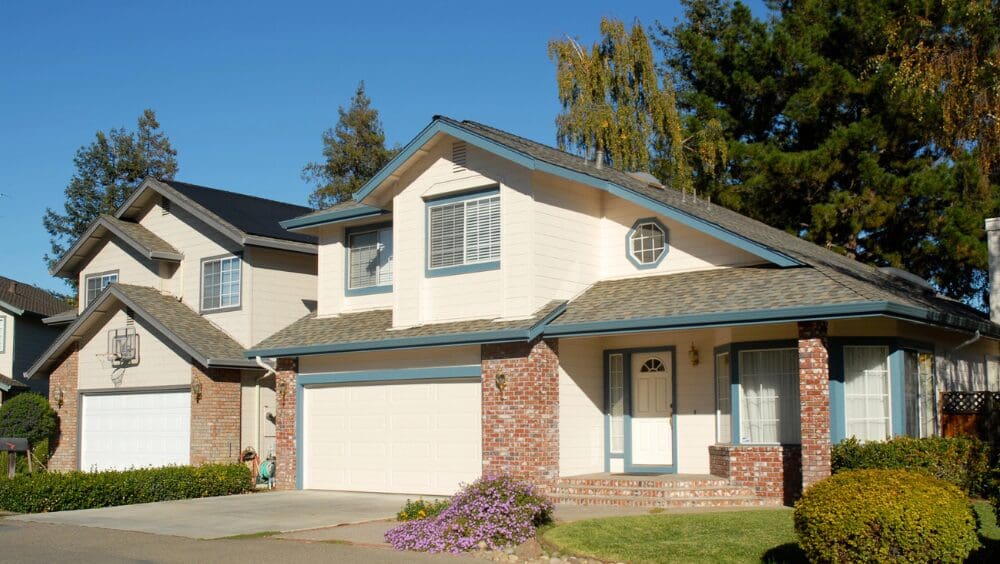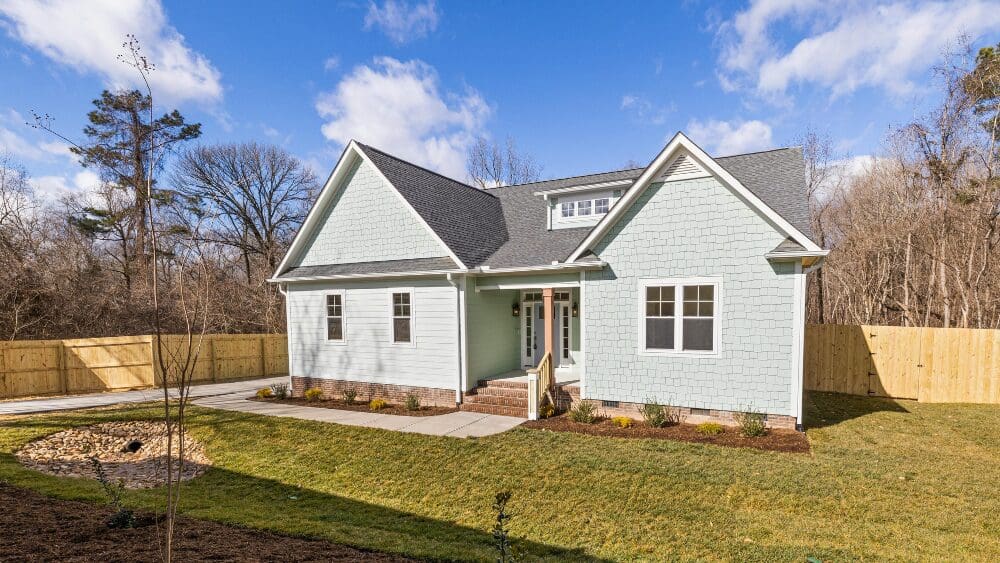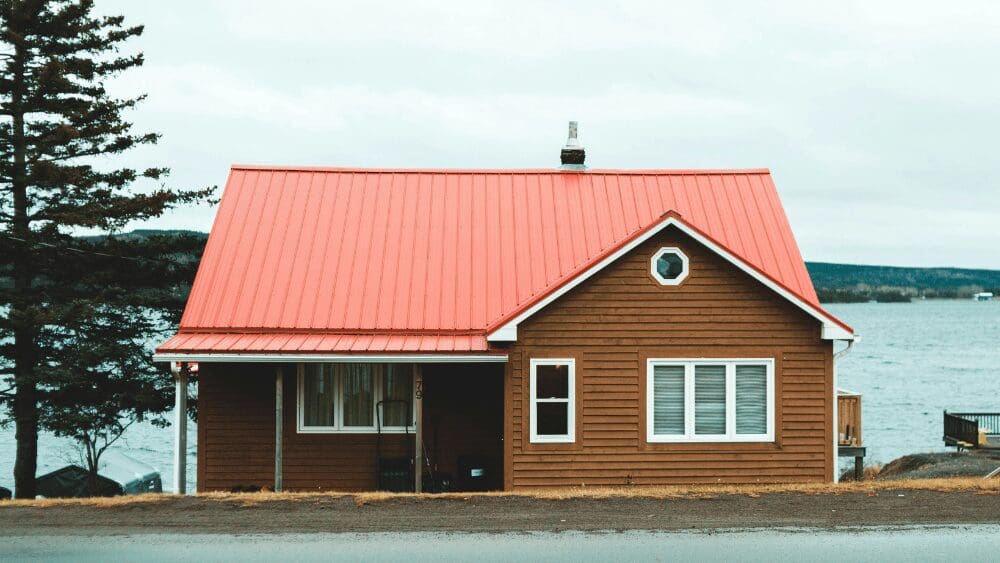
Guest houses are no longer just for the lucky friends of Hampton hopping, tennis swinging socialites. Today homeowners are building guest houses as creative solutions to multi-generational housing and house hacking their mortgages. And in the midst of a pandemic, guest homes are helping families save costs in times of economic turmoil, housing remote college students, and providing an alternative living arrangement to retirement communities. “The trend is very, very, significantly rising,” shares Taylor Cresswell, a top real estate agent who sells 86% more properties than the average agent in Tampa, Florida. In Florida, 4% of homes are multi-generational and another 45,000 homes function as Airbnbs, more than any other state. “In the past two to three years, I’ve seen a lot more [multi-generational] families who are looking for something specifically for their income and, as real estate prices go up, many first time homebuyers looking to owner occupy a property with an in-law suite. It’s the easiest way to cover their mortgage payment.” Let’s dive into the ins and outs of building a guest house and how to achieve the greatest return on investment to make your project worthwhile. Guest houses go by many regional colloquialisms: casitas, granny flats, in-law suites, cottages, tiny houses. In the eyes of the law, these mini-me versions of the main home are divided into two categories: We’ll focus primarily on ADUs, though will use the colloquial term “guest house.” ADUs cost more to build, but yield a higher ROI as they may function as legal rentals. Plus, these units’ full facilities bless both houses with privacy and independence, so you can keep your boisterous mother-in-law or twenty somethings Airbnb guests at a comfortable distance. Before you frolic in fantasyland with your extra casita cash, learn the local laws to see what’s possible in your area. In response to Airbnb and VRBO, many cities are placing restrictions on short-term rentals to prevent local housing from morphing into hotels. More positively, areas with housing shortages are loosening laws on ADUs so they may serve as much-needed rentals. Find your housing zone on your city’s website under “community development” or “planning” sections. The website Accessory Dwellings also provides a crowd sourced catalog of ADU laws in cities across the U.S. for reference. Zoning determines: Even if the zoning checks out, your homeowners association can veto your guest house plans, dictating rental types and terms. Run your plan by the HOA rules and ask if your guest house will be grandfathered in if rules stiffen in the future. With local laws in mind, set an intention for your guest house and consider how it’s purpose will influence design. For rentals, set up a separate meter to track utility usage. For short-term hosting, invest in energy efficient features such as 5-star rated appliances, double paned windows, and LED lighting. These guests are not responsible for utilities so will blissfully run the A/C while absent on excursions. Then build a first-floor guest house with accessible features like a ramp entrance, threshold free flooring, bathroom handrails, and wide doorways. If you’re tempted, custom design the space to fit your needs with higher quality appliances and chic furnishing. The more comfortable you are, the longer you can enjoy low cost living. Remember to cross check your personal desires with what’s realistic for your market. You might love the idea of Airbnb’s high nightly rates, but unless you’re a stone’s throw from main attractions, a long term rental can provide steadier income for far less work. Also consider how your guest house design will affect resale — a ground level guest house will appeal to more multi-generational buyers than an above garage unit. The cost of building a guest house varies widely based on location, quality, and building type. From our research comparing pricing on the web with project costs from our homeowner interviews, the average cost ranges from $30,000 for basic garage conversions to $200,000 for detached units. The base costs for permits, design, utility connection, plumbing, and construction raise the project price before square footage even comes into play. From there, the price increases based on size and the quality of materials you select. Converting your garage is one of the most affordable ways to build a guest house since it offers the base infrastructure for the project: a foundation, three complete walls, roof, and basic electrics. “Eighty percent of the time, in-law suites are going to be a conversion from a garage or something of that nature,” Cresswell shares. “I think that’s where people are seeing value in doing the garage conversion into an in-law suite, because they literally cut a quarter of the cost off.” Detached units offer the best privacy and personal space for renters, Airbnb guests, and family members. On the flip side, they come with a hefty price tag — you’re essentially building a small house from scratch. While less private, attached units are easier to build and often less restricted by size than detached units. The guest house does not need to share a wall to be considered attached. Cresswell shares a recent client’s work around: “To make it attached they just had a breezeway that had two French doors on each side. It was pretty much just a hallway with locked doors at the ends, but that’s how they connected the main house to the in-law suite to consider it attached.” Thanks to the tiny house craze, you can choose from a wide selection of prefabricated units. With prefab, you skip the stress and financial unpredictability of construction. However, you’ll still need to modify the unit to include a full kitchen and bathroom for it to qualify as an ADU. In size-restricted guest houses, every square foot counts. For a design maximizing usable space, hire an architect, contractor, or building company who specializes in small units. An ADU specialist will have a deeper understanding of relevant building codes and project costs than a general contractor. If you don’t have cash immediately available, there are many loans available to help bridge the gap and get you to building. U.S. News provides a comprehensive list of the best home improvement loans in 2020. Here’s some general notes on the different loan types available: Once you’ve finished building your guest house, you may be able to refinance your home to consolidate debt on the property and, in some cases, secure a lower interest rate. When you reappraise your home, the value of the guest house is determined by building type and comparative properties. For instance, attached units add value in square footage while detached units do not. Instead the appraiser adds the value as a Line Item Adjustment usually for around $15,000 to $30,000… which may be significantly less than your building costs. “The in-law suite doesn’t necessarily affect the appraised value, it affects the financing,” shares Cresswell. Financing is where the ADU benefits start to kick in. If you purpose the ADU as a rental and provide proof of tenancy, you can claim 75% of the monthly rental price as income. Airbnb hosts with at least 12 months of guest history can similarly claim income through Airbnb’s mortgage program backed by Fannie Mae. By increasing your debt-to-income ratio, you may qualify for a mortgage with a lower interest rate. Depending on the building type, construction can last anywhere from two to four months, though don’t be surprised if it takes even longer. You can’t control the time it takes to build your guest house, but you can choose the start date: pick a time in life when you can handle a bit of noise and chaos. As you can see, a small guest house requires big planning, but don’t worry — building a guest house is often worth the trouble. Guest houses allow multi-generational families to live together comfortably while saving thousands of dollars a month in daycare and assisted living expenses. When used as a rental, guest houses quickly recoup their building costs through providing supplemental income.Guest houses by definition
1. Getting started: Learn the local laws on ADUs
Zoning laws
Homeowner association rules
2. Define your guest house’s purpose and basic design
Do you want to rent to students at a nearby university? Or host a diverse turnover of Airbnb/VRBO guests?
Will Nana move in when she requires assisted living?
Would you ever move into the guest house and rent out your main house to live mortgage free?
3. Determine building type and project costs
Garage conversion
Detached unit
Attached unit
Prefabricated and modular
4. Hire a specialty contractor or architect
5. Secure financing and project return on investment
Consider refinancing your home once construction is completed
6. Settle in for the building period
Building a guest house is a process, but it’ll be worth it



